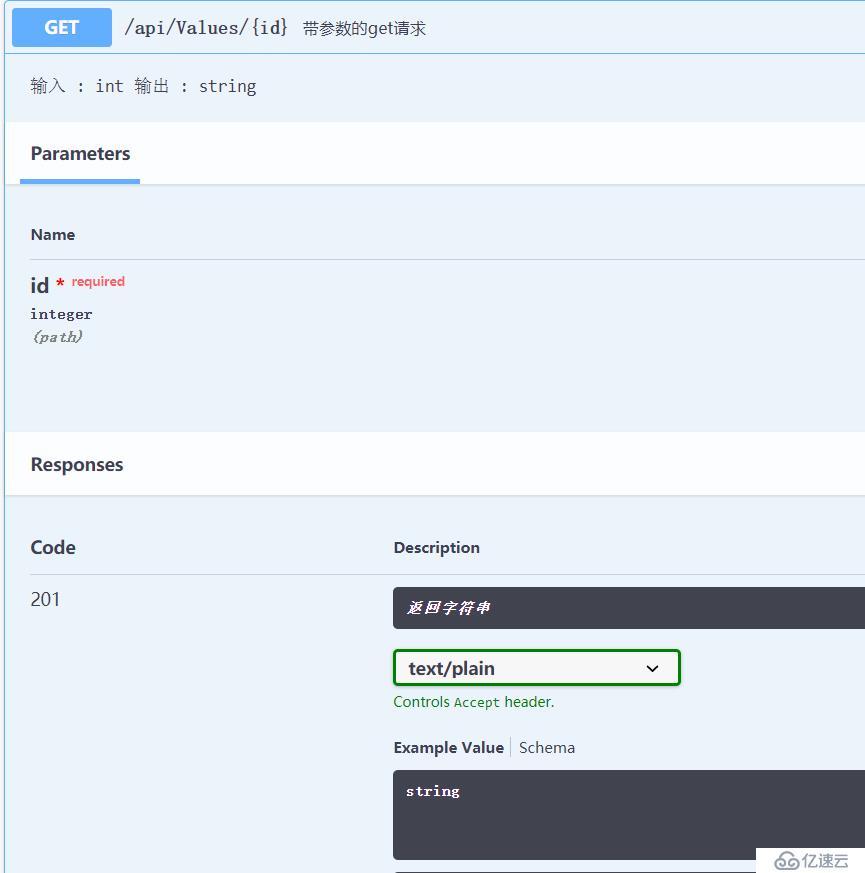搜Swashbuckle.AspNetCore
在NuGet 中,安装 Swashbuckle.AspNetCore :
我使用的版本为 : 5.0.0-rc2
Ⅰ : Startup.cs
① ,ConfigureServices方法中:
public void ConfigureServices(IServiceCollection services)
{
services.AddMvc().SetCompatibilityVersion(CompatibilityVersion.Version_2_2).AddJsonOptions(options =>
{
options.SerializerSettings.Formatting = Formatting.Indented;
});
services.AddSwaggerGen(options =>
{
options.SwaggerDoc("v1", new OpenApiInfo()
{
Title = "Swagger Test UI",
Version = "v1",
Description = "Aonaufly first ASP.NET Core Web API"
});
options.CustomSchemaIds(type => type.FullName); // 解决相同类名会报错的问题
options.IncludeXmlComments(Path.Combine(Directory.GetCurrentDirectory(), "WebAPIPoco.xml")); // 标注要使用的 XML 文档
options.DescribeAllEnumsAsStrings();
});
}②:Configure中
// This method gets called by the runtime. Use this method to configure the HTTP request pipeline.
public void Configure(IApplicationBuilder app, IHostingEnvironment env)
{
if (env.IsDevelopment())
{
app.UseDeveloperExceptionPage();
}
else
{
// The default HSTS value is 30 days. You may want to change this for production scenarios, see https://aka.ms/aspnetcore-hsts.
app.UseHsts();
}
//设置全局跨域
app.UseCors(builder => builder.AllowAnyOrigin());
app.UseHttpsRedirection();
app.UseSwagger(c => { c.RouteTemplate = "swagger/{documentName}/swagger.json"; });
// 在这里面可以注入
app.UseSwaggerUI(options =>
{
options.ShowExtensions();
options.ValidatorUrl(null);
options.SwaggerEndpoint("/swagger/v1/swagger.json", "Aonaufly API V1");
options.DocExpansion(DocExpansion.None);
});
app.UseMvc();
}①,到处项目XML , 加入1591禁止警告
②,将项目XML生成路径复制到项目根路径
copy $(TargetDir)WebAPIPoco.xml $(ProjectDir)WebAPIPoco.xml
③,重置默认网页为swagger , 默认是 api/values

/// <summary>
/// 带参数的get请求
/// </summary>
/// <remarks>
/// <code>
/// 输入 : int
/// 输出 : string
/// </code>
/// </remarks>
/// <param name="id">ID号</param>
/// <returns>String</returns>
/// <response code="201">返回字符串</response>
/// <response code="400">如果id为空</response>
// GET api/values/5
[HttpGet("{id}")]
[ProducesResponseType(201)]
[ProducesResponseType(400)]
public ActionResult<string> Get(int id)
{
return "value";
}结果:
免责声明:本站发布的内容(图片、视频和文字)以原创、转载和分享为主,文章观点不代表本网站立场,如果涉及侵权请联系站长邮箱:is@yisu.com进行举报,并提供相关证据,一经查实,将立刻删除涉嫌侵权内容。